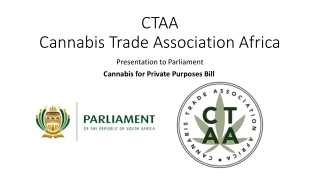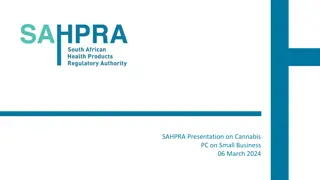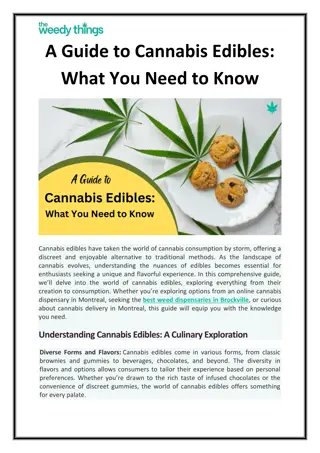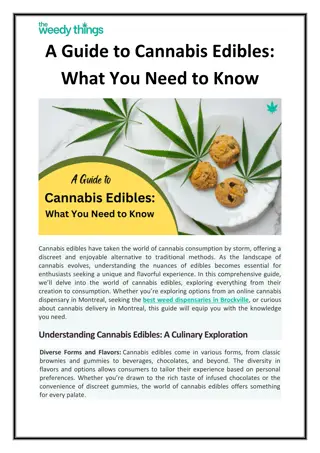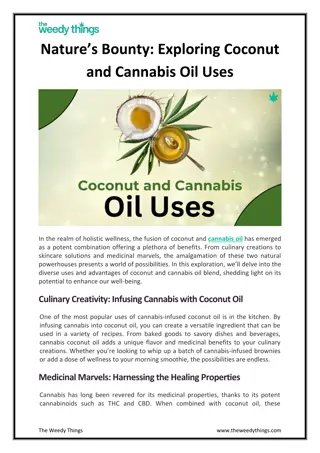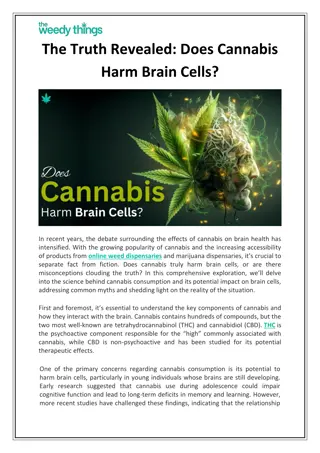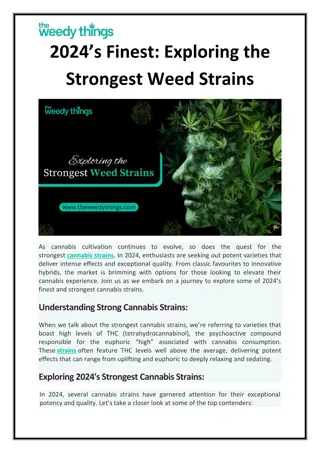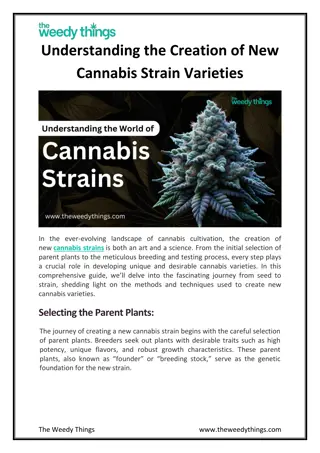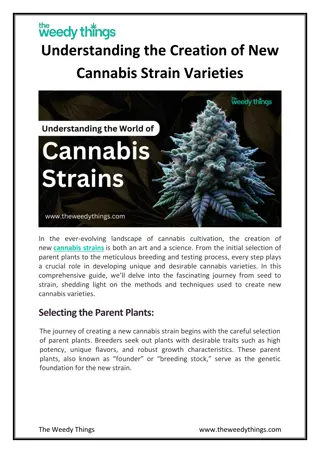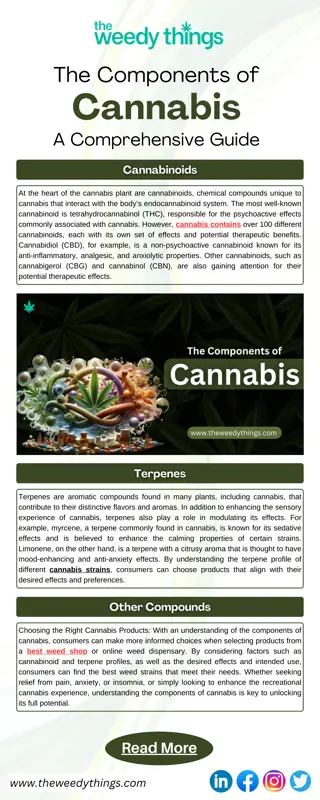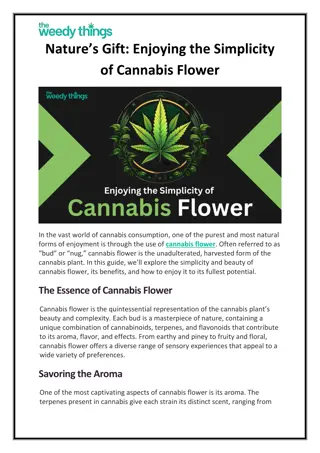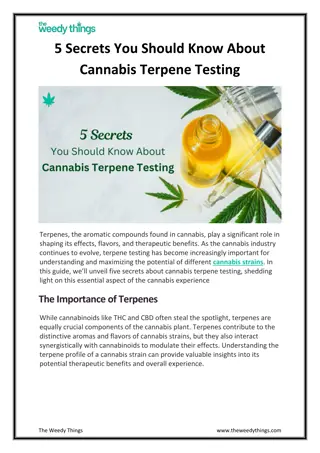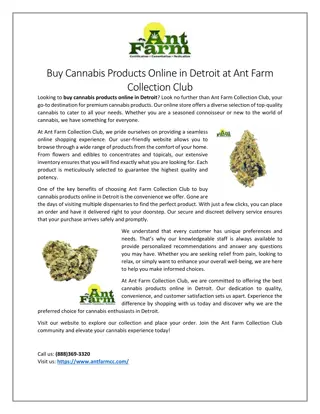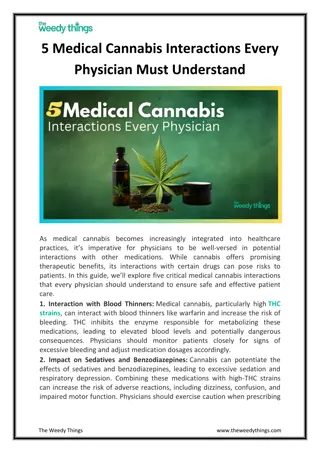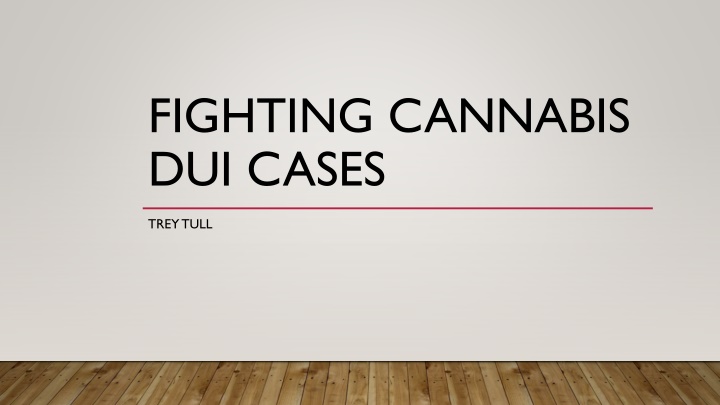
Cannabis Impairment: Detection, Duration, and Metabolites
Explore the indicators, training, and detection methods for cannabis impairment, including the duration of effects, metabolites in the body, and defense strategies in DUI cases. Learn about the signs law enforcement looks for, the duration of impairment, and the presence of metabolites like Hydroxy THC and Carboxy THC in the body.
Download Presentation

Please find below an Image/Link to download the presentation.
The content on the website is provided AS IS for your information and personal use only. It may not be sold, licensed, or shared on other websites without obtaining consent from the author. If you encounter any issues during the download, it is possible that the publisher has removed the file from their server.
You are allowed to download the files provided on this website for personal or commercial use, subject to the condition that they are used lawfully. All files are the property of their respective owners.
The content on the website is provided AS IS for your information and personal use only. It may not be sold, licensed, or shared on other websites without obtaining consent from the author.
E N D
Presentation Transcript
FIGHTING CANNABIS DUI CASES TREY TULL
GENERAL INDICATORS LAW ENFORCEMENT IS TRAINED FOR Odor of Marijuana Bloodshot eyes marked reddening of conjunctiva Body tremors Relaxed inhibitions Debris in mouth raised tastes buds .film on tongue Eyelid tremors
CLINICAL INDICATORS LAW ENFORCEMENT (DRE) IS TRAINED FOR HGN/VGN not present Lack of convergence Dilated pupils Normal Reaction to light Elevated Pulse Rate Elevated Blood Pressure Normal Muscle Tone and Normal Body Temperature
REASONS CANNABIS IMPAIRMENT SUSPECTED Intox results 0.000g% Odor of marijuana Marijuana found inside vehicle Acts high
CANNABIS DURATION (ACCORDING TO DRE MATRIX) 2-3 hours exhibits and feel effects Impairment may last 24hrs Possibly no awareness to effects
CANNABIS AND BLOOD (INHALATION) Peak levels in blood do not correspond with maximum levels of behavioral impairment Little psychomotor impairment when blood concentrations are at maximum Occurs following first 15 minutes of cannabis inhalation
ILLUSTRATION FOR CANNABIS AND BLOOD (INHALATION) NOT TO SCALE
METABOLITES Two distinct metabolites Hydroxy THC Is psychoactive Present in low levels almost immediately after inhalation Peak concentration approximately 20-30 minutes after inhalation Typically not detectable within 6 hours Carboxy THC More commonly detected Remains present for several days, even weeks in chronic users Detection time in urine is even longer (Owusu-Bempah, 2014)
CARBOXY THC DEFENSE Can not accurately predict the time of last cannabis use Can not suggest relationship between urine drug concentrations and psychomotor function Per se limits based on Carboxy findings lack scientific validity Chronic users can release fat stored THC into blood when abstaining THC can be present in blood even if no usage for weeks (Armentano, 2013)
ORAL INGESTION Different pharmacokinetic profile from inhalation Blood levels rise slowly over time Max concentrations 60 to 120 minutes after dosing Decline slowly Onset of effects is delayed (Armentano, 2013) *Knowing if your client smoked or ingested cannabis is crucial to blood defense*
NHTSA SAYS It is difficult to establish a relationship between a person s THC blood or plasma concentration and performance impairing effects Yet states with per se limits will use any metabolite to pursue criminal conviction
NATIONAL INSTITUTE OF JUSTICE APRIL 5, 2021 RELEASE THC levels in biofluid not reliable indicators of marijuana impairment Standard SFSTs are not effective in detecting marijuana intoxication Forensic toxicological laboratories analyzed all samples from study conducted by RTI No correlation found between blood, urine, or oral fluid and psychomotor or cognitive impairment
CRASH RISK ASSESSMENT Mixed study results Some show increased risk Some show no increased risk Studies have suggested subjects under influence are hyperaware of impairment and therefore more vigilant Make fewer lane changes Drive more cautiously, drive slower Leave greater distance between vehicles
REFERENCES National Institute of Justice (NIJ) Address 810 Seventh Street NW. (n.d.). Field Sobriety Tests and THC Levels Unreliable Indicators of Marijuana Intoxication. Field Sobriety Tests and THC Levels Unreliable Indicators of Marijuana Intoxication | Office of Justice Programs. https://www.ojp.gov/ncjrs/virtual- library/abstracts/field-sobriety-tests-and-thc-levels-unreliable-indicators-marijuana. Owusu-Bempah, A. (2014). Cannabis Impaired Driving: An Evaluation of Current Modes of Detection. Canadian Journal of Criminology and Criminal Justice, 56(2), 219 240. https://doi.org/10.3138/cjccj.2014.es05 Paul Armentano. (2013). Should Per Se Limits Be Imposed For Cannabis? Equating Cannabinoid Blood Concentrations with Actual Driver Impairment: Practical Limitations and Concerns.Humboldt Journal of Social Relations,35, 41 51.
CONTACT INFORMATION Trey Tull dwidrugdrivingconsulting@gmail.com 318-278-7328

